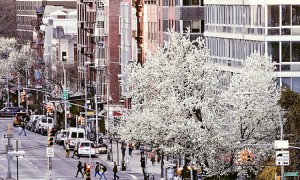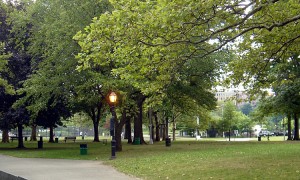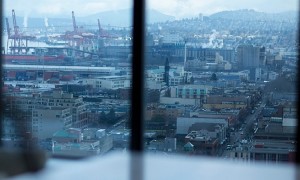Figuring out where to live in NYC can be challenging, especially if you’re on a strict budget. Recent grads without parental support, people in the creative industries, people with steady but middle-class salaries; there are many people who struggle to find an apartment that they can comfortably afford without having to leave the city they love. For those people, finding the latest up-and-coming neighborhood may be the answer. Nabes that have yet to be tagged as the new “IT” neighborhoods could still offer relatively affordable deals. Following is a list of a few of the latest neighborhoods that may offer more affordable living options for people on a tight budget.
Inwood
Heading way uptown has traditionally been a great option for people in search of a more affordable living space. If you don’t mind a longer commute on the A train (45 minutes to midtown), this northernmost Manhattan neighborhood may be a great option for you. The housing stock is primarily prewar and art deco buildings in good condition. According to this New York Times article, it seems like the area has always been on the verge of breaking out into the city’s hip new nabe but never quite makes it. That on-the-brink status has actually helped keep rents and home prices in the area relatively low compared to those found in other parts of the city. Inwood has several sections, each one with its own personality. The least expensive area is east of Broadway, but it can get very noisy. The area about 207th Street and west of Broadway is the most lush, sitting flush with parks and greenspace, but this is also the area where prices tend to be higher.
Bay Ridge
Bay Ridge, located in the southwest corner of Brooklyn, has always had a retro, old-timey appeal, simultaneously in the city but not of the city. The area’s cultural demographic tends to be older, working/middle class and conservative, qualities that are not usually sought out by new transplants looking for where to live. The relatively long commute into the city compared to those from other parts of Brooklyn made it less appealing to people in search of an affordable place to live. Now that prices in parts of Brooklyn closer to the city have soared, Bay Ridge is looking a lot more attractive to people in search of a bargain. What usually brings transplants to a new area are amenities like hip shops, boutiques, and cafes, and while Bay Ridge is not overrun by these yet, more and more are popping up every day. If you can deal with the cantankerous R train, this could be an option. The area’s public schools have great reputations, a positive for families with young children.
East Harlem
Harlem experienced a renaissance a few years ago as everyone seemed to suddenly realize that Manhattan didn’t end after 96th Street. Prices shot through the roof as everyone rushed to inhabit and rehab brownstones in need of repair, many of which had stayed vacant for years. Most of the attention went to West Harlem while East Harlem remained in the shadows. As buyers are priced out of other hot areas of the city, new attention is being paid to East Harlem. Located on the eastern side of Fifth Avenue from 96th to the 140s, the area, also called El Barrio, or Spanish Harlem by long-term residents, has a distinctly Hispanic flair as evidenced by many of the shops and small businesses in the area. Developers have paid more attention to the area, with new developments rising up all the time.
[cf]skyword_tracking_tag[/cf]






